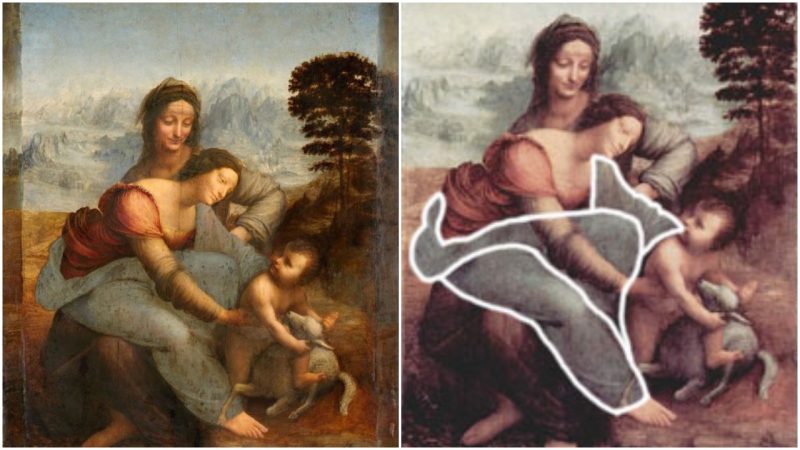It is neither news nor a mystery that Leonardo da Vinci played with hidden messages and symbols in his paintings. According to a few historians of art and other specialists, some of da Vinci’s most famous paintings such as The Last Supper, and Madonna on the Rocks reveal the artist’s individual views on religion.
While according to Martin Lunn (author of Da Vinci Code Decoded), with the painting of Mona Lisa, Da Vinci broke “the conventions of the time” in regard of the absence of jewelry and the relaxed stance of his subject, Sigmund Freud, who observed different artists’ work to psychoanalyze their subconscious, claimed that da Vinci’s The Virgin and Child with Saint Anne revealed his repressed homosexual desire.
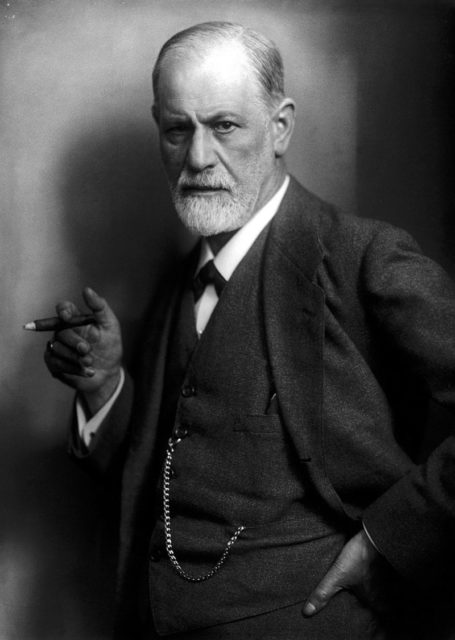
Freud used the method of examining the paintings and finding different symbols that the artists painted, consciously or unconsciously.
Either way, he would later add meaning to those symbols based on details found in various ancient cultures, and analyze them as an expression of the individual’s subconscious.
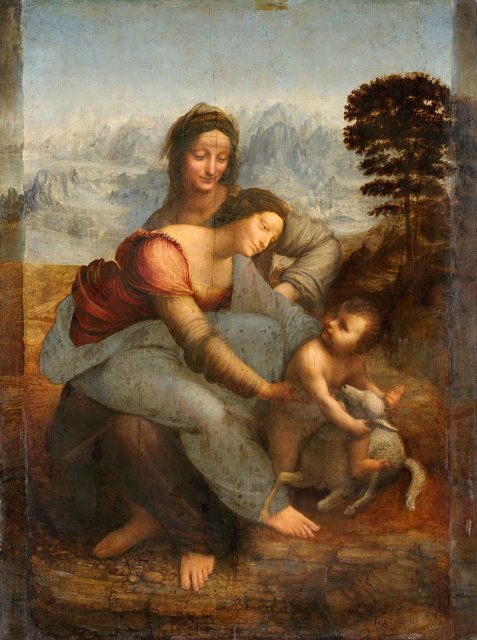
Da Vinci painted The Virgin and Child with Saint Anne around 1503, and today it can be seen in the Louvre museum in Paris.
It portrays the baby Jesus guarded in the arms of the Virgin Mary while she is peacefully sitting on the lap of her mother, St. Anne.
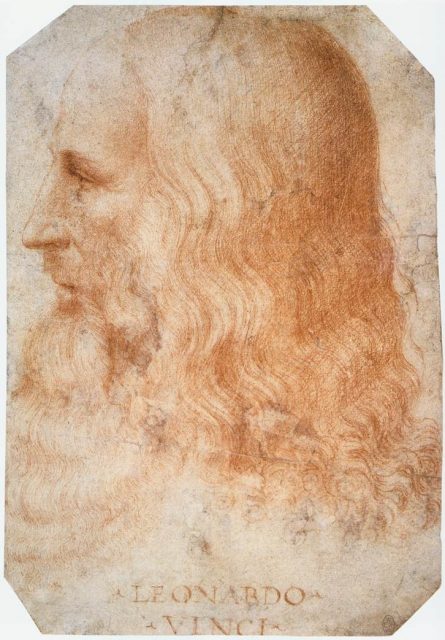
The Virgin Mary is reaching for her child, holding him by his waist, while Jesus is petting a lamb. For Freud’s theory to be more relative, one must take into consideration that the biblical figures in historical paintings are never painted randomly.
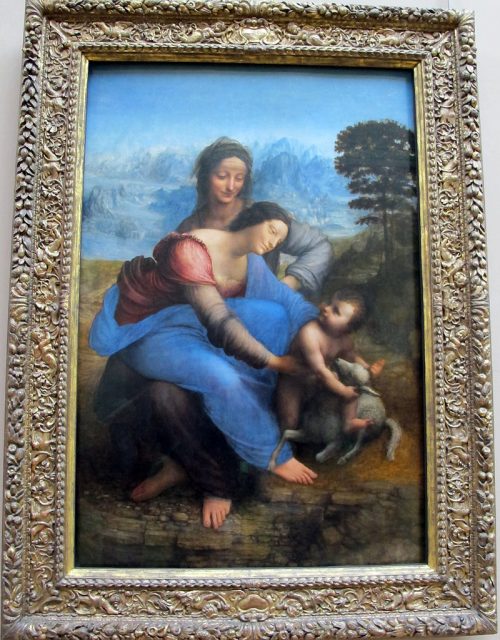
CC BY 3.0
Their positions are always allusions to the lives of the characters and various Christian metaphors. For example, the lamb in the painting can be easily interpreted as a symbol of innocence and Jesus’ sacrifice for humanity. The lamb itself is a symbol of sacrifice and John the Baptist referred to Jesus as the “Lamb of God.”
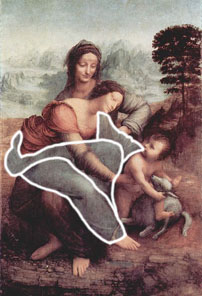
On the other hand, it is somewhat unusual for the Virgin Mary to be portrayed in St. Anne’s lap. Freud saw it as quite interesting for psychoanalytic examination and named it “Leonardo da Vinci and Memory of His Childhood.”
Related Video: Exhibition of Fascinating Da Vinci Designs
https://youtu.be/dtCairKbsL8
According to Freud, when the painting is turned sideways, the shape of Mary’s garments illustrates a bird, probably a vulture. He interprets the image of a vulture as a symbol for a mother, rooting his theory in the fact that the term “mother” in ancient Egypt was depicted with the symbol of a vulture. Hence, he analyzed it as da Vinci’s repressed homosexual desire, triggered by his faint memory of suckling at his mother’s breast.
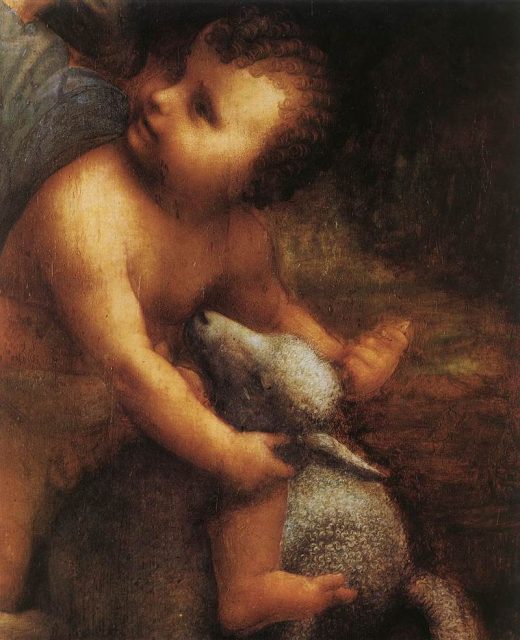
Freud also considered a set of da Vinci’s writings and drawings known as the Codex Atlanticus where the artist wrote about an early childhood memory of a vulture attacking him in his crib. So, Freud considers the illustrations of the vulture tail and a baby’s mouth as possible forceful breastfeeding past the appropriate age.
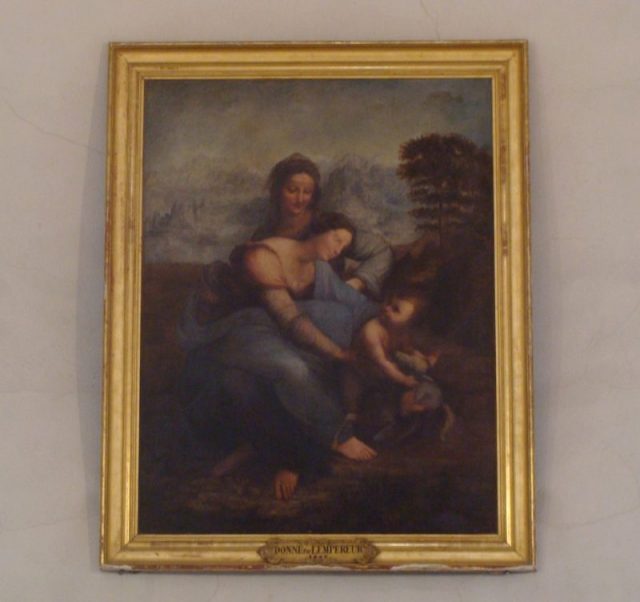
Another of Freud’s observations regarding the representation of Da Vinci’s subconscious in The Virgin and Child with Saint Anne, is that in the illustration of two women (the two of them in the role of a mother) Da Vinci represented his own two mothers. In fact, the artist was first raised by his biological mother and later adopted by his father’s wife.
The psychoanalyst considered his essay “Leonardo da Vinci and Memory of His Childhood” as one of the finest works he’d ever written. However, through the years, Freud’s theories have been brought into question and opposed by many scientists as extreme. He always tended to see hidden or repressed sexuality. And even though his work is a fine one indeed, it can be hardly taken as a proof for Da Vinci’s subconsciousness.
